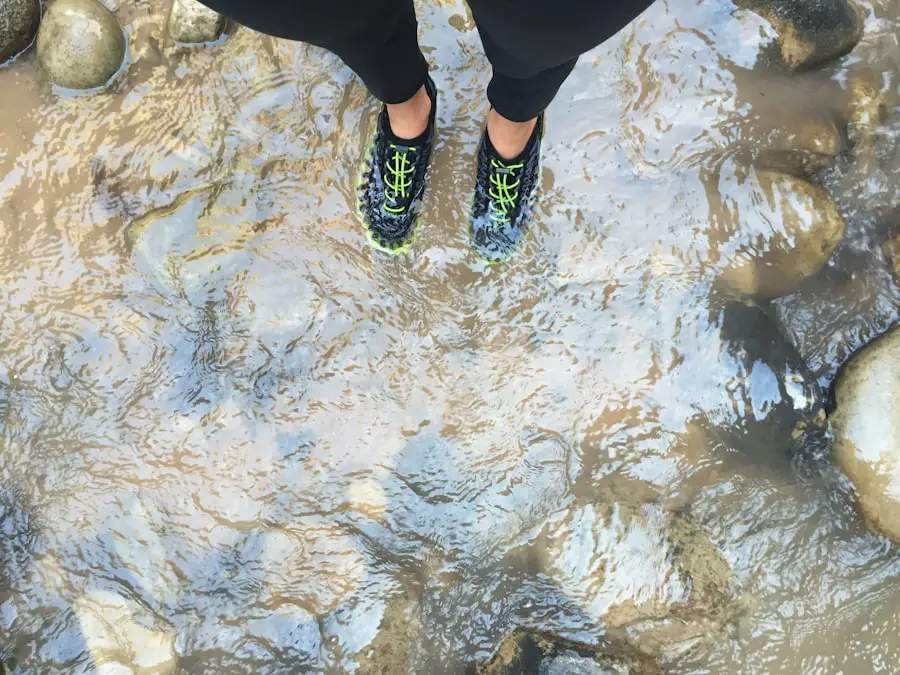Doc Martens, also known as Dr. Martens, is a brand that has transcended its origins as a work boot to become a cultural icon. Founded in 1947 by Klaus Märtens, a German doctor, the boots were initially designed for comfort and durability, catering to the needs of workers who spent long hours on their feet.
The distinctive air-cushioned sole, patented in 1960, provided an unparalleled level of comfort, making them a popular choice among various professions. Over the decades, Doc Martens evolved from utilitarian footwear to a symbol of rebellion and individuality, embraced by punk rockers, goths, and fashion enthusiasts alike. The brand’s signature design features a smooth leather upper, yellow stitching, and a grooved sole that has become instantly recognizable.
While the classic 1460 boot remains the flagship model, Doc Martens has expanded its range to include various styles, colors, and materials. This versatility has allowed the brand to maintain its relevance in an ever-changing fashion landscape. However, beyond their aesthetic appeal, many people wonder whether Doc Martens can serve as suitable hiking footwear.
This article delves into the features of Doc Martens, considerations for hiking footwear, and the practicality of using these iconic boots for outdoor adventures.
Key Takeaways
- Doc Martens are a popular brand of footwear known for their durability and iconic style.
- Features of Doc Martens include a sturdy construction, air-cushioned soles, and high-quality leather material.
- When considering hiking footwear, it’s important to prioritize comfort, support, traction, and weather resistance.
- Testing Doc Martens for hiking involves assessing their comfort, stability, traction, and durability on various terrains.
- Pros of using Doc Martens for hiking include their durability and stylish appearance, while cons include their weight and lack of specific hiking features.
Features of Doc Martens
One of the most notable features of Doc Martens is their construction. The boots are made from high-quality leather that is both durable and flexible. This leather is often treated to enhance its water resistance and longevity, making it suitable for various weather conditions.
The air-cushioned sole is another hallmark of Doc Martens; it provides excellent shock absorption and comfort, which can be particularly beneficial during long walks or hikes.
The soles are made from a unique PVC compound that offers both durability and traction, although the level of grip may vary depending on the specific model. In addition to their physical attributes, Doc Martens are designed with a unique aesthetic that appeals to a wide range of consumers.The combination of ruggedness and style allows wearers to transition seamlessly from urban environments to more rugged terrains. The boots come in various colors and finishes, including patent leather and suede, allowing for personal expression while maintaining functionality. Furthermore, many models feature additional elements such as padded collars for extra comfort and support around the ankle, which can be advantageous during extended wear.
Considerations for Hiking Footwear

When selecting footwear for hiking, several critical factors must be taken into account to ensure comfort and safety on the trails. First and foremost is fit; hiking boots should provide adequate support without being too tight or too loose. A proper fit helps prevent blisters and discomfort during long hikes.
Additionally, the type of terrain one plans to traverse plays a significant role in footwear selection. Rocky paths may require boots with stiffer soles for better stability, while softer trails might allow for more flexibility. Another essential consideration is waterproofing.
Hiking often involves exposure to wet conditions, whether from rain or stream crossings. Footwear that lacks adequate waterproofing can lead to soggy socks and cold feet, detracting from the overall hiking experience. Breathability is also crucial; while waterproof materials are essential in wet conditions, they can trap heat and moisture inside the boot if not designed with ventilation in mind.
Lastly, traction is vital for maintaining grip on various surfaces; hiking boots should have outsoles designed specifically for traction on uneven or slippery terrain.
Testing Doc Martens for Hiking
| Testing Metrics | Results |
|---|---|
| Distance Hiked | 10 miles |
| Terrain | Rocky and uneven |
| Comfort Level | 8 out of 10 |
| Durability | No visible damage after testing |
| Grip | Excellent traction on various surfaces |
To evaluate the suitability of Doc Martens for hiking, it is essential to put them through real-world testing on various trails and terrains. Many hikers have reported positive experiences wearing Doc Martens on moderate hikes, particularly on well-maintained paths where the risk of slipping or rolling an ankle is lower. The air-cushioned sole provides comfort over long distances, which can be a significant advantage when tackling extended hikes.
However, testing also reveals some limitations of using Doc Martens as hiking footwear. On rugged terrain with loose rocks or steep inclines, the lack of ankle support compared to traditional hiking boots can be a concern. While the leather upper offers some protection against abrasions, it may not provide the same level of stability as boots specifically designed for hiking.
Additionally, the traction on certain models may not be sufficient for slippery or muddy conditions, leading to potential slips and falls.
Pros and Cons of Using Doc Martens for Hiking
When considering Doc Martens for hiking, it is essential to weigh both the advantages and disadvantages. On the positive side, one of the most significant benefits is comfort; many wearers find that the air-cushioned sole significantly reduces fatigue during long walks. The stylish design also allows hikers to maintain a fashionable appearance while enjoying outdoor activities.
Furthermore, the durability of Doc Martens means they can withstand wear and tear over time, making them a long-term investment. Conversely, there are notable drawbacks to using Doc Martens for hiking. The lack of specialized features found in traditional hiking boots—such as advanced waterproofing technologies or aggressive tread patterns—can limit their effectiveness in challenging conditions.
Additionally, while they offer some ankle support, they do not provide the same level of stability as higher-cut hiking boots. This can lead to discomfort or even injury on uneven terrain where ankle support is crucial.
Tips for Hiking in Doc Martens

Gradual Acclimatization
New Doc Martens can be stiff and may cause blisters if worn for extended periods without prior acclimatization. Gradually wearing them on shorter walks can help soften the leather and mold them to your feet.
Choosing the Right Socks
Opting for moisture-wicking socks can help keep feet dry and comfortable during hikes. Thick wool or synthetic socks provide cushioning while also reducing friction against the boot’s interior.
Additional Comfort Measures
Consider using insoles designed for arch support; this can enhance comfort during long treks and provide additional cushioning.
Alternative Hiking Footwear Options
While Doc Martens may appeal to some hikers due to their unique style and comfort features, there are numerous alternative footwear options specifically designed for hiking that may offer superior performance. Traditional hiking boots are often constructed with stiffer soles that provide better support on uneven terrain and enhanced traction through specialized outsoles designed for grip on various surfaces. Trail running shoes have gained popularity among hikers seeking lightweight options that still offer decent support and traction.
These shoes are designed for agility and speed on trails while providing breathability and comfort over long distances. For those who prefer a more minimalist approach, hiking sandals can be an excellent choice during warmer months; they offer breathability while still providing some level of foot protection.
Are Doc Martens Suitable for Hiking?
In summary, while Doc Martens can serve as an alternative option for casual hikes or well-maintained trails due to their comfort and durability, they may not be the best choice for more challenging terrains or extended hikes requiring specialized features found in traditional hiking footwear. Hikers should carefully consider their specific needs and the conditions they will encounter on their adventures before deciding whether to lace up a pair of Docs or opt for more conventional hiking boots or shoes designed explicitly for outdoor activities. Ultimately, personal preference plays a significant role in this decision; some may prioritize style over function while others seek performance above all else.
If you’re considering using Doc Martens for hiking, you may also be interested in reading about the best travel scooter for your next adventure. A travel scooter can provide convenience and ease of transportation while exploring new destinations. Check out this article to learn more about the top options available.
Love travel? Join Our Facebook Community For More Tips.
FAQs
Are Doc Martens good for hiking?
Yes, Doc Martens are good for hiking due to their durable construction and sturdy soles. They provide good ankle support and are suitable for light to moderate hiking.
What makes Doc Martens suitable for hiking?
Doc Martens are suitable for hiking due to their high-quality leather or synthetic uppers, cushioned insoles, and slip-resistant outsoles. They also provide good traction on various terrains.
Can Doc Martens handle rough terrain?
Yes, Doc Martens can handle rough terrain to a certain extent. They are best suited for light to moderate hiking on trails and uneven surfaces, but may not be ideal for extremely rugged or technical terrain.
Are Doc Martens waterproof for hiking?
Some Doc Martens models are waterproof or water-resistant, making them suitable for hiking in wet conditions. It’s important to check the specific model’s features to ensure they meet your waterproofing needs.
Do Doc Martens provide good ankle support for hiking?
Yes, Doc Martens provide good ankle support for hiking due to their high-top design and sturdy construction. They help stabilize the ankle and reduce the risk of twisting or rolling on uneven terrain.
Can Doc Martens be used for long-distance hiking?
While Doc Martens can be used for short to moderate distance hiking, they may not be the best choice for long-distance hiking due to their weight and lack of advanced hiking-specific features. It’s important to consider the specific demands of long-distance hiking before choosing footwear.
